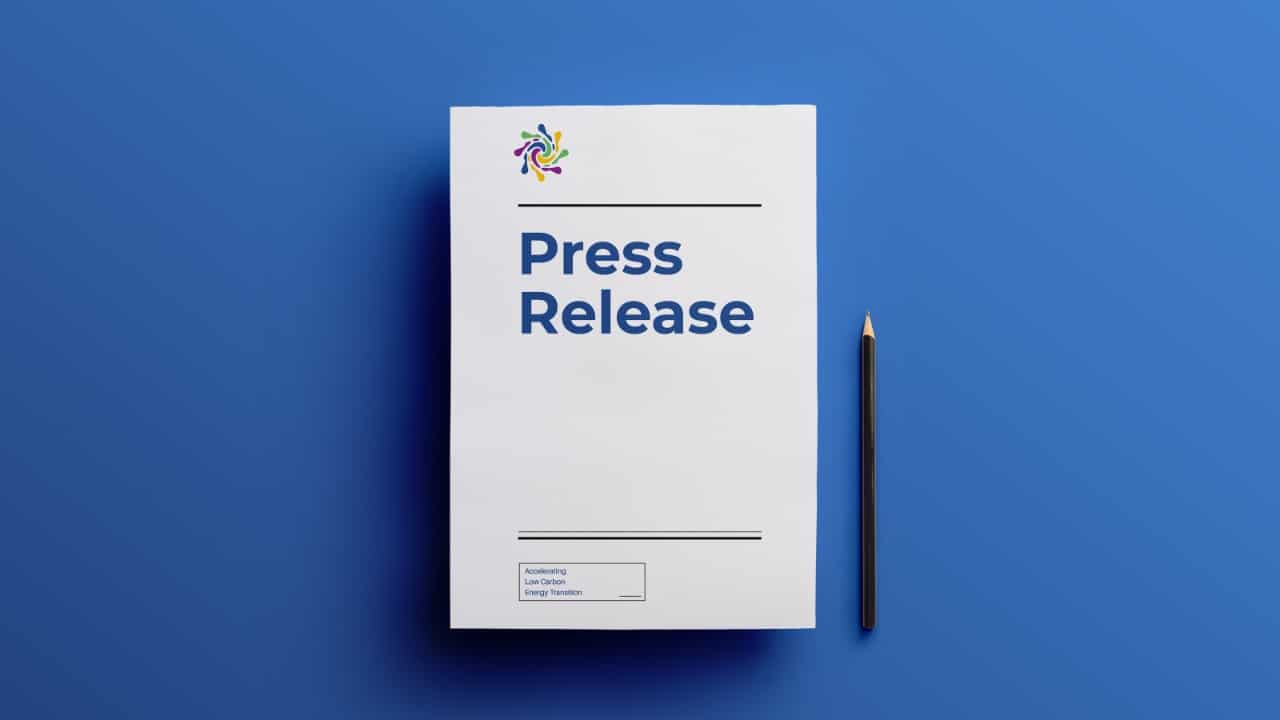Jakarta, December 12, 2023 – Indonesia aims to reach peak greenhouse gas (GHG) emissions by 2035 and gradually move towards net zero emission (NZE) by 2060 or earlier. The energy sector in Indonesia is currently a major source of emissions, with nearly 90.4 percent of the country’s domestic energy supply coming from fossil fuels. Therefore, the transition to renewable energy is crucial in reducing emissions.
Unfortunately, the Institute for Essential Services Reform (IESR) observed that the trend of renewable energy development tends to slow down, reaching only 0.97 GW of the 3.4 GW target in the fourth quarter of 2023. This slow progress will make it difficult for Indonesia to reduce its emissions and meet the decarbonization target in the power sector. Moreover, with rapidly increasing emissions from the demand sector, Indonesia is at risk of not reaching its peak emissions. Therefore, it is crucial to have high emission reduction ambition and strong political commitment to achieve the target.
The discussion of Indonesia’s efforts to reach peak emissions in 2030, which has the potential to be a milestone in the transformation to renewable energy on a large scale or to end hopes of achieving the NZE target sooner, is the main topic in IESR’s flagship report entitled Indonesia Energy Transition Outlook (IETO) 2024.
The Executive Director of IESR, Fabby Tumiwa, stated that this year’s IETO 2024 is more comprehensive in monitoring Indonesia’s energy transition development and projection. Tumiwa mentioned that Indonesia has already released a plan.
The IETO 2024 report states that for Indonesia to meet the emission target of 250 MtCO2e/y by 2030, as agreed upon in the Just Energy Transition Partnership (JETP), it must reduce its coal and diesel power plants by 4.29 GW by 2030. Furthermore, Indonesia needs to increase its renewable energy development by at least 30.5 GW by 2030 to achieve this goal.
Pintoko Aji, Renewable Energy Analyst of IESR, said that the high penetration of variable renewable energy (solar and wind power) will make the concept of baseload plants or plants that operate continuously with high capacity irrelevant.
“To incorporate more variable renewable energy (VRE), Indonesia’s electricity system requires a flexible and responsive infrastructure. This means that the power system must be able to adapt to fluctuating loads and respond to the variability of electricity production from VRE sources. To achieve this, it is necessary to thoroughly review contractual restrictions, such as legal contract modifications from take-or-pay to take-and-pay, and to implement flexibility incentives.,” said Pintoko Aji.
IESR encourages the government to show stronger political will and concrete steps to accelerate renewable energy penetration. In addition, the decarbonization strategy must be implemented across all sectors to support each other. IESR believes that the new president who will be elected in the 2024 election must create momentum for the energy transition from the beginning of his leadership.
All discussions on the status and analysis of the energy sector to accelerate the energy transition are summarized in the Indonesia Energy Transition Outlook (IETO) 2024 and published since 2017 with the Indonesia Clean Energy Outlook (ICEO), which then transformed into IETO in 2019.
“In addition to summarizing the course of Indonesia’s energy transition over the past year, this IETO comprehensively projects sectoral policies in each energy sector and contrasts them with long-term targets. This can be an input for policymakers and stakeholders in the electricity, transportation, industry, and building sectors to improve their sectoral emission mitigation targets and implementation levels,” explained Deon Arinaldo, Program Manager of Energy Transformation, IESR.
IESR will host the Indonesia Energy Transition Outlook 2024 report launch on December 15, 2023. Don’t miss the chance to register and participate in this momentous event. Visit s.id/IETO2024 to secure your spot today.

